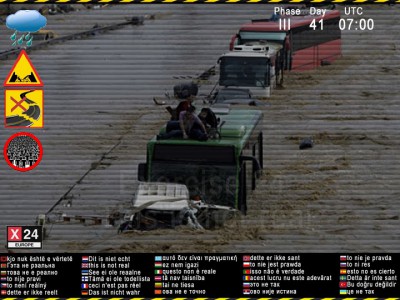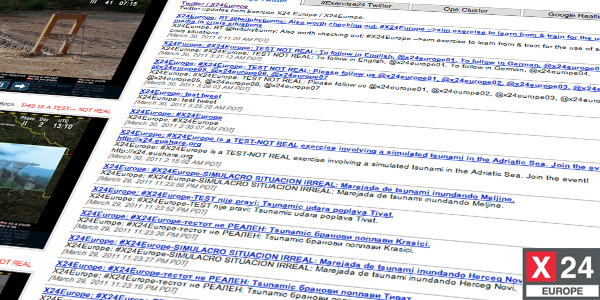With all eyes on the tragedy unfolding in Japan, many people are taking the opportunity to better prepare for future natural disasters.
New technologies developed during the Haiti earthquake led to the creation of Exercise 24 (X24), an international operation that tests communications and response to a simulated natural disaster by international relief organizations, government agencies and militaries from all over the world in a “no-fault” environment.
Following the success of the first X24 in September 2010, which simulated a series of natural disasters off the coast of Southern California and Northern Baja California, San Diego State’sImmersive Visualization Center (VizCenter) began to prepare X24 Europe (March 28–31) to provide participants the opportunity to test disaster response in Europe.
Incorporating real-time lessons
Planning for X24 Europe began months ago. However, the X24 team is closely watching the situation in Japan and and political unrest in the Middle East, and will incorporate lessons learned to improve response to the simulation in X24 Europe.
“A major part of the simulation will be current events,” said Eric Frost, director of the VizCenter.
“Real-time situations, including response to the Japanese earthquake and ongoing events in the Middle East, will be folded into the simulation, giving participants real examples to work with while allowing organizations to continue assisting in current disaster response.”
 X24 Europe will simulate a complex cascade of disasters, starting with a 7.3-magnitude earthquake occurring offshore of Montenegro. The earthquake will generate a tsunami in the Adriatic Sea, which will damage key resources and critical infrastructure of coastal cities, villages, ports and vessels in Montenegro, Bosnia and Croatia. A 7.0-magnitude earthquake will also occur in western Macedonia, which will damage key resources and critical infrastructure there and in southwestern Kosovo.
X24 Europe will simulate a complex cascade of disasters, starting with a 7.3-magnitude earthquake occurring offshore of Montenegro. The earthquake will generate a tsunami in the Adriatic Sea, which will damage key resources and critical infrastructure of coastal cities, villages, ports and vessels in Montenegro, Bosnia and Croatia. A 7.0-magnitude earthquake will also occur in western Macedonia, which will damage key resources and critical infrastructure there and in southwestern Kosovo.
The impact of these natural disasters will be exacerbated by construction techniques not designed to withstand seismic events. Additionally, participants will be challenged by simulated post-earthquake medical emergencies, food and water supply distribution problems, trapped persons rescue, recovery and reconstruction.
Encouraging global conversations
X24 Europe will be run from control nodes n San Diego, Calif.; Stuttgart, Germany; and Washington DC, with participants from Montenegro, Kosovo, Tunisia, Turkey and other countries around the world. Participants will discuss in open chat sessions their responses to various situations that might occur up to six months after the earthquake.
Participants will also have the opportunity to use real-life examples in their simulation. For instance, refugee camps in Tunisia will participate in X24 Europe by providing real data on camp conditions and challenges. This is particularly relevant to the simulation since an earthquake in the Balkans could trigger a tsunami that would affect Tunisia.
Social media in disaster response
X24 Europe will be conducted with “no-cost,” off-the-shelf online social media, crowd sourcing and collaboration tools such as VSEE, Ushahidi, Twitter, Facebook, text messaging and a suite of Google products (e.g., Google Earth, Google Translate, People Finder).
X24 Europe will demonstrate the ability of these tools to gather information, coordinate actions and provide assistance to help thousands of victims and to save lives.
X24 will once again work closely with traditional and social media outlets, including Twitter, Facebook and Google, to get the word out about the simulated disaster exercise.
The public is encouraged to visit X24 Europe’s website at x24.eushare.org to learn how they can participate in the exercise. Instructions and exercise rules can be found by clicking on the “How to Participate” tab. All X24 Europe communications must contain the phrase “TEST—NOT REAL.” Otherwise, the message will be ignored.
Once the exercise concludes, organizers will generate an after-action report that identifies best practices and weaknesses of the X24 response. The report will guide future exercises and response efforts.


